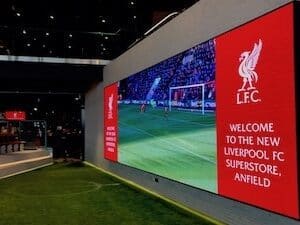Technology has revolutionized the display industry, giving rise to led screen that dominate the marketplace today. LED displays are useful for a wide variety of applications, such as for example billboards, television screens, and even medical equipment. However, not everybody understands how they work. In this post, we shall take a closer go through the technology behind LED displays, how they function, and their benefits.

The acronym LED represents Light Emitting Diode, which really is a semiconductor that emits light when it conducts electricity. Unlike traditional incandescent bulbs, the brightness of LED displays depends on the quantity of current that runs through it, not the warmth generated by the filament. Therefore, LED displays consume less electricity, go longer, and are safer than traditional bulbs.
LED displays are comprised of small pixels arranged in a grid. These pixels contain three colored LED lights, one for red, green, and blue. By aligning the LED lights, an infinite number of colors could be generated. The three colors combine to produce white light. The pixel's size and pitch dictate the display's resolution and sharpness, with smaller pixels and shorter pitches resulting in crisper images.
The brightness of an LED display varies from one model to another. The luminosity is measured in nits, which describes the LED light output. However, a higher nits value does not necessarily equal a better brightness level. One of the most crucial factors affecting an LED display's brightness is the surroundings where it is used. Indoor displays have lower brightness levels than outdoor displays as they are not exposed to direct sunlight. The suitable brightness level depends on the display's location and lighting.
One of many unique options that come with LED displays is their versatility in design and shape. LED lights could be arranged in different shapes and sizes, permitting complex and artistic forms. LED displays can also be designed in curved displays, creating an immersive viewing experience that draws the viewer in to the content. The flexibility of LED displays causes it to be a favorite choice among designers and advertisers.
The past aspect to take into account when understanding the technology behind LED displays is the maintenance and repair process. While LED displays are durable, they could still experience issues. The most typical issues are dead LEDs, damaged driver ICs, and faulty power supply units. Replacing and repairing individual LED displays is a sophisticated process, requiring specific knowledge and tools. For this reason it is essential to really have a professional technician go through the issue.

Conclusion:
The technology behind LED displays is fascinating, having its many benefits and applications. LED displays' capability to adapt to various environments, bright colors, and flexible designs make sure they are a popular selection for commercial and industrial purposes. Understanding the technology behind LED displays is crucial when selecting an LED display for the business's needs. From choosing the suitable brightness to addressing maintenance concerns, the best knowledge can assist you to make the best decision. In the long run, the success of an LED display installation depends upon the quality of the merchandise and the technician tasked with maintenance and repair.
